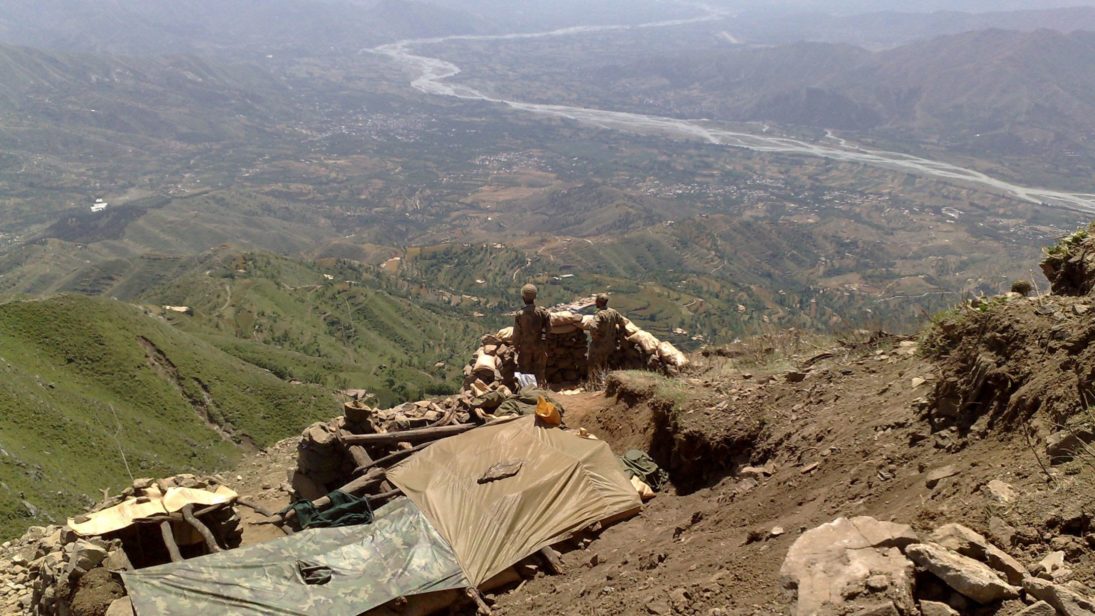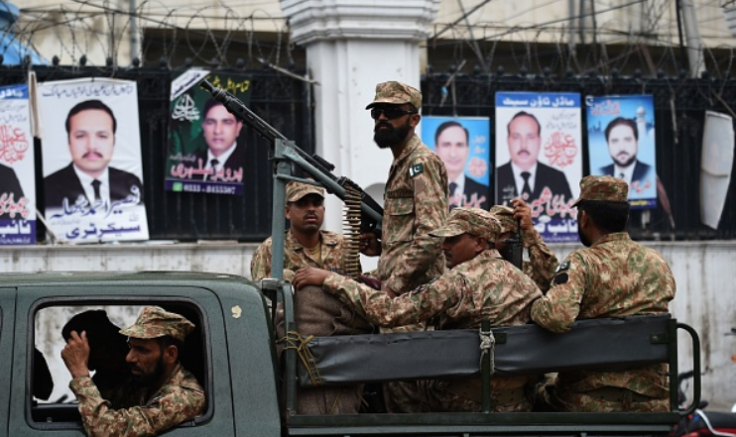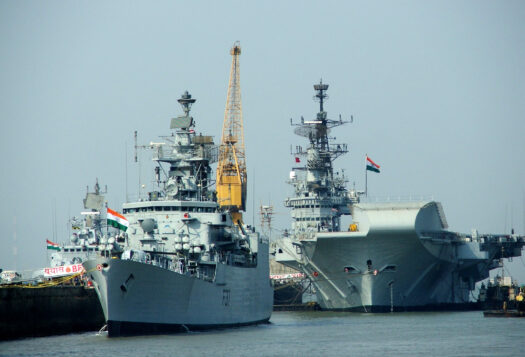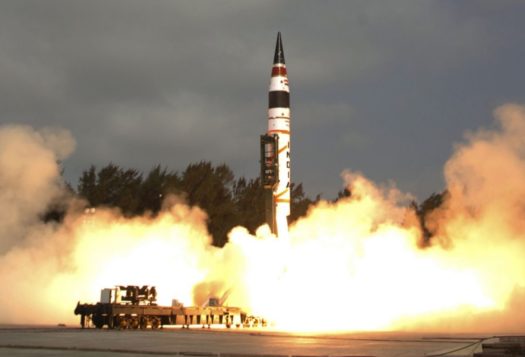
Col. (retd.) David O. Smith’s work The Quetta Experience: A Study of Attitudes and Values Within Pakistan’s Army provides a comprehensive look at the evolution (and consistency) in the perspectives of Pakistan Army officers trained at the Command and Staff College Quetta from 1977-2014. Spanning 37 years, the study covers the perspectives of three distinct generations of Pakistani officers at the Command and Staff College—senior officers, senior mid-level officers, and junior mid-level officers—as well as the experiences of the U.S. Army Foreign Area Officers (FAOs) who undertook the staff course at the College during this period.
Among the most significant and policy-relevant aspects of the book are Smith’s analysis of the perceptions of the Pakistani Army along four main lines of inquiry: 1) perceptions of external threats and friendships, 2) perceptions of internal security threats, 3) attitudes towards the state and its institutions, and 4) attitudes towards nuclear issues. It is worth noting, however, that the information is largely drawn from the subjective experiences of the FAOs and remains debatable for various reasons. First, the variation in the level of familiarity with local languages and culture creates a discrepancy in the ability of the FAOs to discern reliable information. Second, is the question of how much access the FAOs had during their time at the staff college. It is an open secret that the security institutions often reveal only what they want the “foreigners” to see and know.
Despite these concerns, Smith does an admirable job capturing a wide range of opinions offered by the FAOs and synthesizing these with experts’ analysis to discuss the implications of his study. Smith offers a succinct overview of Pakistan’s strategic dynamics roughly over the past four decades, and ultimately argues: “the [Pakistan] Army’s attitudes and values have changed very little in the 37 years of this study, and there is no reason to expect they will change appreciably in the future, and certainly not in the next decade.” Time will tell whether this conclusion holds, however, points in Smith’s work and events that have happened since suggest that pivotal moments or broader shifts in public discourse can echo even in the most rigid of institutions.
The points of consistency, as well as potential friction or shifts in attitudes in the Pakistan Army, are explored below.
Perspectives on External and Internal Threats
Smith’s most striking departure from the common assumptions on Pakistan’s threat perception is his finding that there is a notable degree of change in the attitudes of young army officers regarding the prioritization of internal and external threats. Smith argues that many “recent students believe Pakistan-focused militant groups are Pakistan’s most significant military threat, exceeding that posed by India,” and highlights the generational divide in perspectives on the preeminence of the threat from India. From his standpoint, the young officers who have lost their friends and troops fighting against the militants in Swat or erstwhile FATA have a divergent viewpoint on the significance of the Indian threat. He concludes that these officers “may even be more amenable to contemplate making peace with India.”
The Army’s narrative about internal and external security threats is largely framed in non-binary terms. The internal threats particularly relating militancy are projected as an extension of the external threats, mainly the threat from India.
The significance of the internal threats has undeniably received greater recognition in the Army over the past decade. However, the Army’s narrative about internal and external security threats is largely framed in non-binary terms. The internal threats particularly relating militancy are projected as an extension of the external threats, mainly the threat from India. Smith correctly notes elsewhere that India is usually blamed for the Baloch insurgency. This explanation is liberally applied to every challenge that the state or state institutions face to the extent that the dissident voices are also accused of working on India’s behest.
Of course, this tendency is not solely because of the traditionally hostile relationship with India. In the recent past, genuine peace overtures were extended by Pakistan to resolve outstanding issues with India. This was driven by Pakistan’s self-interest in improving its economic condition that has deteriorated to such an extent that sustaining hostile relations with India is becoming unbearably burdensome. However, the domestic political situation in India and India’s policy change on Kashmir in 2019 has left the government in Pakistan with little choice. Under these circumstances, the narrative that India poses an existential threat to Pakistan has resurfaced, suggesting that avenues for cooperation with a new class of senior officers may be more limited.
Friendships with the United States and China
Smith begins his analysis on Pakistan’s external friendships with a look at U.S.-Pakistan relations—noting the downward trajectory of Pakistani perceptions of the United States moving from a friend to an unreliable partner, and eventually to a threat. Smith heavily relies on the perspectives shared by the U.S. FAOs, however, his account also corresponds with pivotal moments in the U.S.-Pakistan relationship.
The 1950s and 60s witnessed the blossoming of the Pak-U.S. relationship under bilateral and multilateral treaties, while the India-Pakistan wars of 1965 and 1971 left a sour taste on Pakistan’s side with many complaining that the United States had proven to be an unreliable partner. This perception strengthened after the end of the Cold War when the United States imposed sanctions on Pakistan after a decade of covert cooperation against the erstwhile Soviet Union in Afghanistan. 9/11 changed the dynamics of Pak-U.S. relationship once again with Pakistan turning into a major non-NATO ally. Yet, the relationship was more a consequence of perceived strategic compulsion on Pakistan’s part and the trust deficit persisted. In the meantime, the 2004 U.S.-India Framework for Strategic Partnership and 2008 Civil Nuclear Cooperation agreement generated anxiety even among the proponents of Pak-U.S. cooperation. Eventually, 2011 proved a disastrous year for the bilateral relationship. The raid to capture Osama Bin Laden and later the Salala incident fueled serious grievances over the violation of Pakistan’s sovereignty. The U.S. concerns about the safety and security of Pakistan’s nuclear weapons also made Pakistani officials suspicious of the U.S. plans vis-à-vis Pakistan. As a result, the perceptions about the United States changed from an unreliable partner to a possible source of threat.

Despite this, Pakistan has cooperated with the United States in facilitating the Afghan peace process, and several factors continue to make the United States an important factor in Pakistan’s military and political elite’s calculus. First is the status of the United States as a global power and its subsequent ability to influence the dynamics of peace and war in South Asia. Second, U.S. military and financial assistance has been crucial for Pakistan’s decision-making elite over the past several decades. Pakistan’s leadership finds itself in a bind due to its dependence on International Monetary Fund, which is heavily influenced by the United States. Finally, the West-oriented military and political elite in Pakistan feels naturally gravitated toward the United States. Smith rightly concludes that irrespective of the seeming tensions between the two sides, “[the] Army will continue to be led by relatively moderate officers who see value in the U.S.-Pakistan relationship.” The bigger question, however, is how the United States will pursue its goals in the region—Pakistan in turn will calibrate its response accordingly.
In his brief account of the Pakistan-China relationship, Smith highlights the correlation between the downward trajectory of Pak-U.S. relations and the upward trajectory of Pak-China relations first during the Pressler sanction period and later in 2011. Beyond the trends at the Staff College that Smith puts forth as evidence, Andrew Small’s account of Pakistan-China nexus reveals that the robust relationship between the two states existed even under former President General Pervez Musharraf’s rule. For example, Small claims that China exercised enormous amount of influence on Pakistan during the 2007 Lal Masjid crisis. This reveals the extent of close partnership that Pakistan and China had even before the period of heightened tension between Pakistan and the United States in 2011.
Smith correctly notes that the Army officers have long preferred Western military equipment over Chinese weapons. This may still hold true, however, there is also a clear acceptance in Pakistan of China as a more reliable economic and military partner. Although the political and military elite in Pakistan finds China less relatable in cultural terms there is a clear recognition that China has made significant strides in advanced technologies including telecommunications and artificial intelligence. The growing interaction between the Pakistan Army and the PLA is also likely to have consequences for how China is perceived by Pakistani officers. Further, China’s growing political influence in the world politics is no secret. These factors make China a much sought-after partner by many including Pakistan. Above all, China’s ability, and willingness to help Pakistan overcome its economic challenges has strengthened the perception that China is a dependable friend.
On Attitudes Toward the State and its Institutions
As with attitudes in other areas, Smith finds that perceptions of the state and its institutions have remained remarkably consistent. He accurately notes: “Staff College students support democracy in theory, but are harshly critical of civilian political institutions in practice.” Later, Smith concludes that, “because of the Army’s visceral distaste for politicians and the media, an eventual return to military rule cannot be ruled out.” Smith also does not foresee any possibility of fragmentation in the Army, and attributes the cohesion within the Army to its institutional structure that offers unparalleled benefits to its members. This cohesion is also by Smith’s correct observation that the career prospects of young officers—dependent upon the loyalty to the institution’s narrative and values—can inhibit critical thinking and the willingness to challenge the status quo. Yet, one cannot completely foresee the consequences of the generational shift that is in the offing. The young officers today are part of the social media generation that is far more deeply connected to the rest of the world than the previous generations. This is not to overstate the expectations relating change that social media can foster but to indicate the possibilities.
Smith’s study, which concluded in 2014, has also missed some major changes in Pakistan’s current political climate. Two developments are worth mentioning in this regard. First, is the rise of a powerful peace movement in the Khyber Pakhtunkhwa province under the banner of Pashtun Tahafuz Movement (PTM). Second, the recent formation of a coalition of opposition parties in the Pakistan Democratic Movement (PDM). Both the PTM and PDM have openly called out the military for what they claim as the undue exercise of power. The PTM questions Pakistan’s national security policy whereas the PDM stands against the role of military in politics.
One cannot completely foresee the consequences of the generational shift that is in the offing. The young officers today are part of the social media generation that is far more deeply connected to the rest of the world than the previous generations. This is not to overstate the expectations relating change that social media can foster but to indicate the possibilities.
Such massive public criticism of the role of military is hard to go unnoticed among the young officers. How it may affect them, however, remains to be seen. The top leadership will undertake every step possible to consolidate the institutional narrative on national security and the perception that the military interferes in politics only as a matter of last resort in the event of the failure of civil institutions. Despite the cohesion and consistency that Smith identifies in Pakistan’s Armed Forces, the unprecedented nature of public criticism of the military’s role in politics may generate uncertainty about the outlook of the institution.
On Attitudes Towards Nuclear Issues
Smith’s study reveals a near-absence of any substantive content and conversation on nuclear issues in the curriculum taught at the staff college particularly over the past two decades, and notes that most officers assumed that any future war between India and Pakistan will come to an end before the use of nuclear weapons. Smith contends that the students at the college are not well-informed on issues relating nuclear war and further states: “the implications of strategic and tactical uses of nuclear weapons are not well-understood, and no doctrine for warfighting is taught at the Staff College.”
Contrarily, based on his observations about the outdated curriculum, lack of an effective joint warfighting doctrine, and the eroding conventional military balance between India and Pakistan, Smith argues that Pakistan will be compelled to escalate quickly to the nuclear level to avoid defeat in any future war with India.
The question that arises here is, why would the Staff college curriculum neglect operational training in nuclear warfighting if the use of nuclear weapons early in a crisis, remains a possibility? Also, what factors explain Pakistan’s restraint in the wake of the Balakot crisis? This is not to suggest that the Army will not contemplate using nuclear weapons early or later in the crisis. It is to argue that given the existing state of information, one can at best only speculate about various possibilities without having any concrete answers about Pakistan’s actual nuclear strategy and warfighting capability.
Conclusion
Smith’s account of the organization and structure of Command and Staff College Quetta as well as the values and attitudes of young officers is incisive and helpful glimpse into the Army’s institutional culture and ethos. Smith’s analysis of the Pakistan Army will likely remain relevant for the years to come. As Pakistan and the geopolitical environment changes, however, this study will be most useful to readers engaging with the inquiries and the conclusion separately, each on their own terms.
Editor’s Note: This article is part of the South Asian Voices series: “Reviewing the Quetta and Wellington Experience,” in which SAV contributors discuss Col. (retd.) David Smith’s two books The Quetta Experience: A Study of Attitudes and Values Within Pakistan’s Army and The Wellington Experience: A Study of Attitudes and Values Within the Indian Army. The full series can be read here. The SAV webinar, featuring David Smith and the series contributors Brig. (retd.) Naeem Salik, Reshmi Kazi, Sadia Tasleem, and Aditi Malhotra can be watched here.
***
Image 1: Al Jazeera English via Wikimedia Commons
Image 2: Wakil Kohsar/AFP via Getty Images


